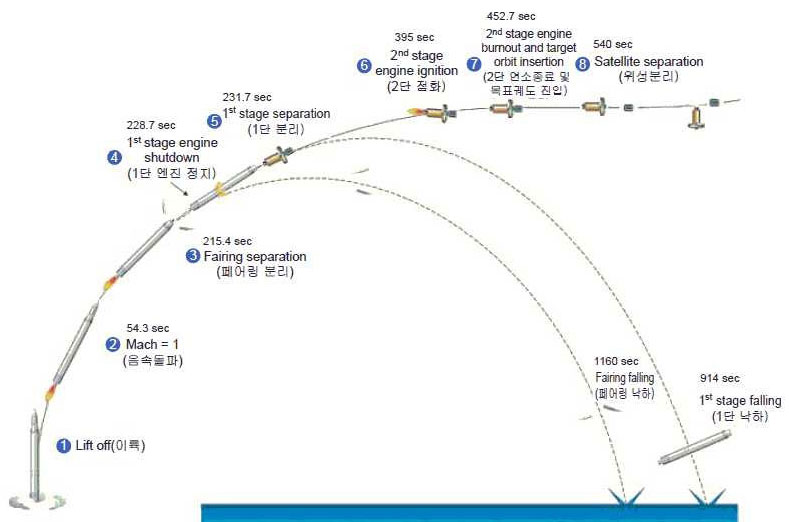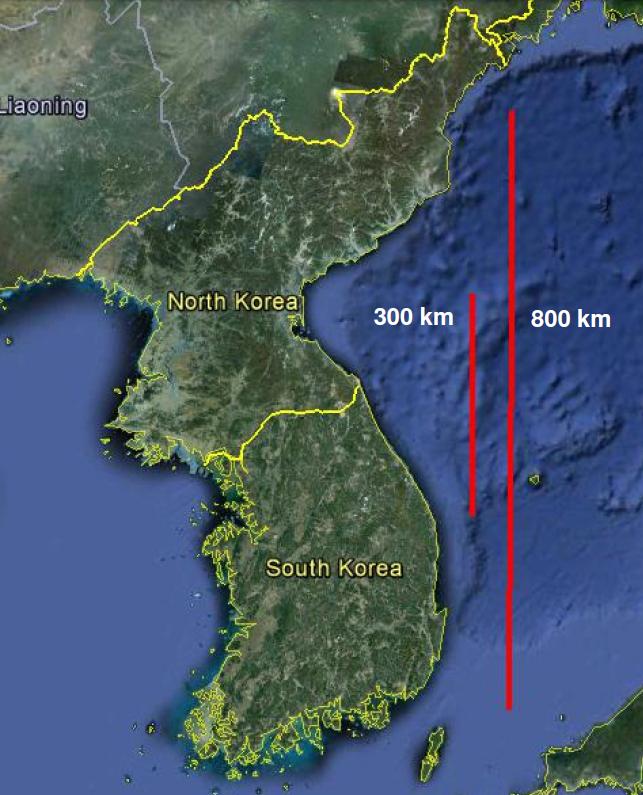This Thursday, South Korea is scheduled to try again to complete its first successful launch of a satellite into orbit. Two previous launch attempts failed in 2009 and 2010. While the South currently has five satellites in orbit, those have been launched by other countries. Only ten countries have successfully independently launched satellites into orbit, the most recent being Iran.
South Korea has built the solid-fueled second stage of the Korea Satellite Launch Vehicle (KSLV), but is purchasing the large Angara first stage from a Russian company, Khrunichev. That stage uses cryogenic liquid fuel (kerosene and liquid oxygen). The KSLV is reported to be able to place a small satellite of about 100 kg into low Earth orbit.
The launch was originally scheduled for October, but was delayed by a fuel leak.
This launch comes on the heels of an announcement earlier this month that the U.S. agreed to allow South Korea to build ballistic missiles with ranges up to 800 km, instead of the previous limit of 300 km. Range restrictions on South Korean ballistic missiles were first set in 1972 in return for the U.S. providing missile technology to the South. The original limit of 180 km was extended to 300 km in 2001 to match the limit of the Missile Technology Control Regime (MTCR). Needless to say, North Korea was not happy about this extension.
Now reports are circulating that North Korea may be preparing for another satellite launch attempt, following its most recent failure in April. Analysis of commercial satellite images reportedly shows evidence of recent ground tests of rocket engines in the North, as well as activity at and the possible transport of rocket parts to North Korea’s launch site.
So far, North Korea has not successfully tested a rocket with a range of more than 1,300 km. Successfully launching a satellite would demonstrate technology it could use to build a ballistic missile with a much longer range. However, it has not test-flown a heatshield that would be needed for a long-range missile, and may not be able to build a small enough nuclear warhead for such a missile.
Preparing for a launch less than a year after a failure calls into question whether the North could have analyzed and fixed whatever went wrong, and raises the question of whether the activity is instead a response to these two developments in the South. It’s possible, of course, that Pyongyang knows its preparations will be seen and discussed in the west and they are intended to be a signal rather than signs of an imminent launch. In particular, the North has not yet announced splashdown zones for its launch as it did for its last two tests, so it may not have launch plans for the immediate future.


